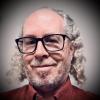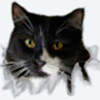Jamie Donaldson (now and SMC member) is not only a fixture in the turning world for some pretty neat stuff, but also a knowledgeable pro photographer. He's also not one to spend a lot of money on something that can be done "Phrugally". He's spoken about shooting turnings, etc., at AAW symposiums, turning clubs and numerous places online...we are all best served by listening to his contributions as the best work is only mediocre if your pictures don't support your efforts. A great many folks have already benefited from his simple advise.
With his permission, here is a reproduction of his popular "Phrugal Photo Studio" article. The original PDF file is too large to post, so I've reformatted it for inclusion in the SMC Turning Forum as a thread. You can post questions here, but please be patient as the author can't be three places at once!
--------
The Phrugal Photo Studio way to shoot woodturnings
This tutorial is aimed at average “Joe Woodturner” who has some basic photo skills and a digital camera, but not a studio full of lighting equipment. Photographing wood turnings is no more complicated than learning the turning process, but some specialized lighting techniques are necessary in order to accurately present the work. An image of a turning often represents the visual language by which we communicate, and that image must be a literal rendering, with accurate color, dimension, and a sense of reality. In order to convey the message without distraction, keep things simple- we are not selling a “candlelight halo” of a product in a simulated environment.
Let’s start with the Phrugal Photo Studio principle of maximum image quality with minimum cost and equipment. A box frame made with PVC pipe and sides of foamcore panels provides the means to contain and control light, in this example a regular $10 Q/H 500w work light fixture. The light is aimed up, not directly toward the subject turning, as in photo 1 below.
Photo 1. Frame is ˝" PVC pipe, sides measure 34"x34" and top is 44" wide. Backdrop is a white vinyl roll-up window shade. I often plug camera video into this monitor for enhanced view of shadow area of turning.
Photo 2. Add R front panel between light and camera to reduce lens flare and contain light. Move bounce card on L to aim light into base shadow area of turning.
Thus the light is bounced off the sides and top of the enclosure, creating a diffused, softer light without distinct hard shadows. The shadow on the L side of the turning opposite the light source on R is filled with a movable bounce card- white on one side and optional aluminum foil on the other. This bounce card allows aiming of the bounced light into the base area, filling the deep shadows with some visible detail rather than darkness, as in photo 2 above. This entire set-up can be made for less than $50!
The backdrop should not compete with the subject for your attention. Neutral colors of white or gray work best, and with light colored woods a black background can be used with caution. The light reflective characteristics of the backdrop can significantly alter exposure calculations, especially if your camera doesn’t allow manual exposure control. For optimum results, both exposure and color balance can be determined by reading the light reflected from an 18% gray card placed at the subject position. With zoom lens equipped cameras, use the longer focal lengths to avoid “fat lady”(barrel) distortion caused by wide angle lenses. Maximum depth of field is achieved by selectively focusing on a point on the subject that is 1/3 from the front and 2/3 from the back. And of course the camera should always be mounted on a sturdy tripod to avoid the shakes!
Manipulation of the captured image with software is a whole nother subject, and it is these capabilities that separate film from digital image making. I do most of my shooting with the camera set to the highest resolution that I might ever need, and JPEG compression low (HIGH or FINE on some cameras). When making software changes, always work on a copy of the original file, and convert to a TIFF or other format that doesn’t cause further loss of image quality. But having optimal image capture up front really reduces the necessity of making major software changes to the image, and image workflow and output will be better in the end.
















